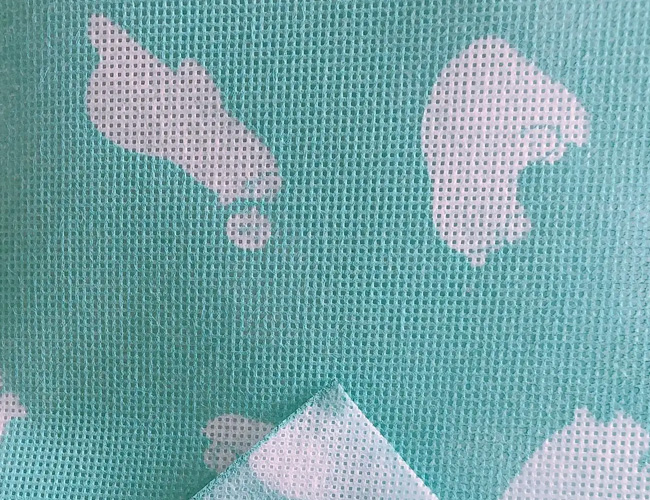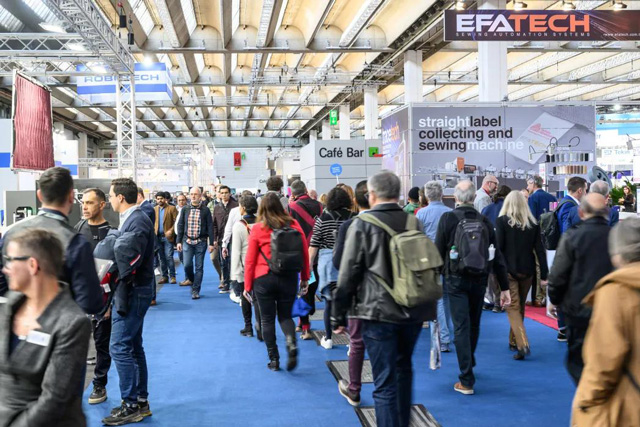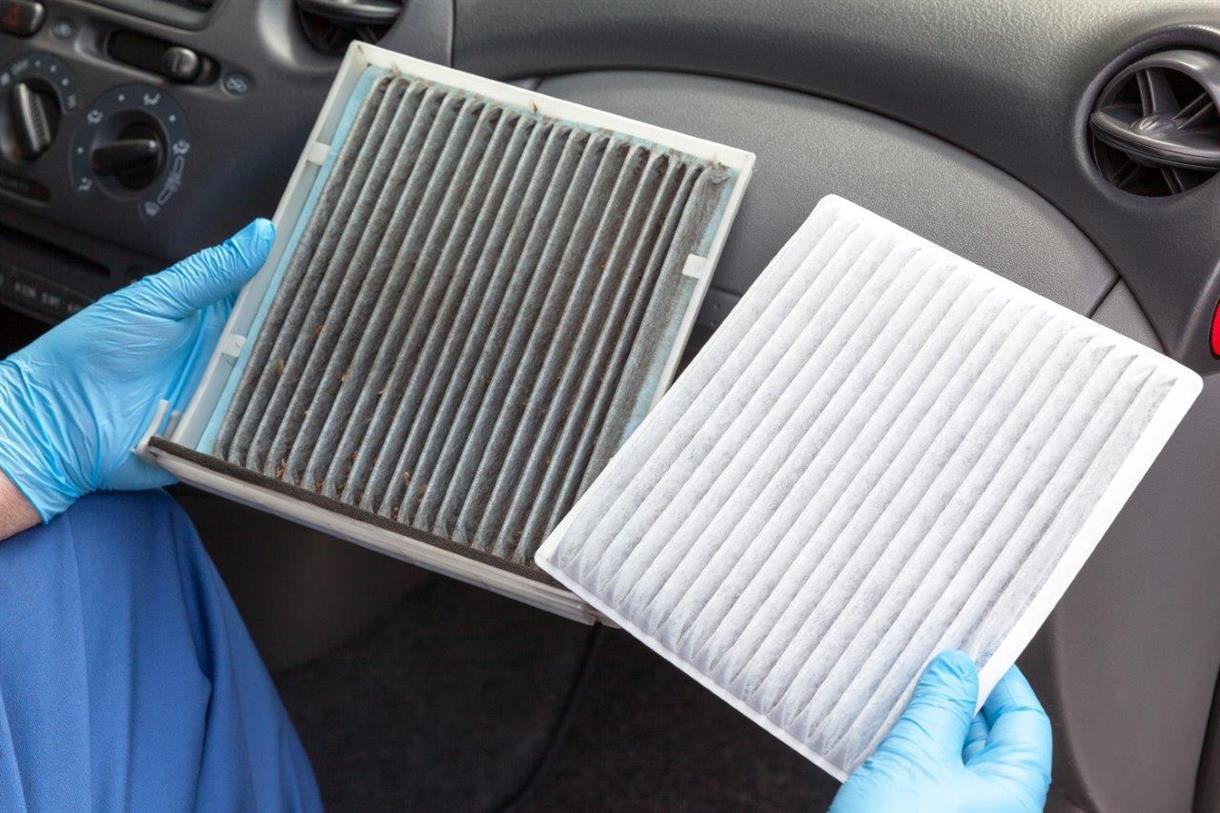
Definition of printed nonwoven fabric: It is a non-woven fabric printed by the printing process, including chemical fibers and plant fibers, etc. under the conditions of water or air as a suspension medium in the wet or dry paper machine made, although the cloth and not by the textile so it is called non-woven fabric printing.
Nonwoven fabric is a non-woven material with excellent physical properties and good air permeability due to its non-textile structure. Printed nonwoven fabric can be treated with the printing process to make its surface show various patterns or colors, which has high decorative and aesthetic properties.
Printed nonwoven fabric is usually used in home textile products (e.g. bed sheets, curtains, etc.) and decorative materials (e.g. wallpaper, carpets, etc.). In addition, it can also be used in medical and hygiene products and daily necessities, such as masks, protective clothing, wipes, etc. Since printed nonwovens are less prone to fiber drop and lint and are easy to clean, they are also widely used in the medical and food industries.
1. Decorative: Printed nonwoven fabrics are usually used in home decoration, clothing, and other fields, which can add beautiful visual effects to products.
2. Protection: Some printed nonwovens can provide protection for goods, such as packaging and protecting goods during transportation.
3. Sterilization: Some printed nonwovens are specially treated to enhance their antibacterial properties and can be used in the medical and health fields, such as floor coverings in operating rooms.
4. Environmentally friendly: Since printed nonwovens do not need textile processing, they are often more environmentally friendly than traditional fabrics because they consume less energy and produce less waste.
5. Absorbency and breathability: Some printed nonwovens can be made into products that are breathable and absorbent, such as sanitary napkins and diapers.

Printed nonwoven is a nonwoven fabric that is usually made of polypropylene(pp) fibers.
Polypropylene is a synthetic material with excellent physical properties and chemical stability, making it one of the most common raw materials used in the manufacture of nonwoven fabrics. This is where the question arises: Can you print on non-woven fabric?
The surface of printed nonwovens is often specially treated so that they can be printed in a variety of colors and so that the pattern is sharp and clear.
In addition to polypropylene, printed nonwovens can also be made from other synthetic fibers such as polyester (PET) and polyethylene (PE), which are impregnated in a variety of thicknesses, hand feel, and hardness.
The specific process flow of printed nonwovens may vary slightly depending on different production equipment, raw materials, and product requirements. The following steps are the general printed nonwoven process flow.
1. Design the printing pattern: first of all, you need to design the printing pattern, you can use computer software to design and adjust the size and color of the pattern according to the actual needs.
2. Make a printing plate: a printing plate is an important tool for printing, which can be made with photosensitive plates, silk nets, computer engraving, etc.
3. Prepare non-woven fabric: Pre-treat the non-woven fabric, remove impurities, and cut and iron.
4. Paint blending: Blend different colors and types of paint as needed for printing.
5. Printing: Place the printing plate on the non-woven fabric, apply the paint to the printing plate with a squeegee or roller, and then emboss the printing plate with the non-woven fabric to transfer the paint to the non-woven fabric to form a pattern.
6. Drying and curing: After the printing is completed, the non-woven fabric needs to be put on the oven or drying rack for drying and waiting for the coating to be completely cured.
7. Post-treatment: According to the need for printing non-woven fabric for ironing, cutting, and other post-treatment processes, and finally get the finished product.
It should be noted that the specific process of printing nonwoven may vary slightly due to different production equipment, raw materials, and product requirements, but the above steps are the general printing nonwoven process.

Printed nonwoven fabric can come in a variety of colors, depending on the pigments used for printing and the color of the nonwoven. Printed nonwovens are often printed using digital printing or dye printing techniques, which allow various patterns and colors to be printed on the nonwoven.
Some common printed nonwoven colors include white, black, red, blue, green, yellow, orange, pink, etc. In addition, printed nonwoven fabrics can also be printed with special effects such as rainbow colors, metallic colors, fluorescent colors, pearlescent colors, etc.
It should be noted that the same color may appear differently on different printed nonwovens due to the different printing pigments and nonwoven quality.
Of course, we still have to customize the color that our customers need according to their requirements.
1. Light: polypropylene resin is the main production material, specific gravity is 0.9, only 3/5 of cotton, soft and good hand feeling.
2. Soft: light hot-melt bonding molding composed of fine fibers (2-3D). The finished product is moderately soft and comfortable.
3. Printed nonwoven fabric breathable: polypropylene slices do not absorb water, the water content of 0, good water resistance of the finished product, 100% fiber composition of good porosity, good breathability, fabric dry and easy to wash.
4. Printed nonwoven fabric purifies the air, using the advantages of small holes, can prevent bacteria and viruses.
5. Printed nonwoven fabric is non-toxic and non-stimulating: the product is produced with FDA food raw materials, does not contain other chemical ingredients, has stable performance, is non-toxic, tasteless, and does not stimulate the skin.
6. Printed nonwoven fabric antibacterial, chemical resistant: polypropylene is a chemically blunt substance, not moth-eaten, and can isolate the liquid body bacteria and worm-like erosion. Antibacterial, and alkali corrosion and finished products will not affect the strength due to erosion.
7. Printed non-woven antibacterial properties. Product pumping is not moldy, isolate the erosion of bacteria and worm class within the liquid body, and prevents fungal decay.
8. Printed nonwoven fabric's physical properties are very good. The strength of the product is better than that of ordinary staple fiber products, the strength is non-directional, and the longitudinal and transverse strength is about the same.
9. The raw material of most nonwoven fabrics used in the printing nonwoven environment is polypropylene, and the raw material of plastic bags is polyethylene. The two substances are similar in name but differ greatly in chemical structure.

Polyethylene's chemical molecular structure is quite stable, decomposition is very difficult, and plastic bag decomposition takes 300 years. The chemical structure of polypropylene is not strong, the molecular chain is easy to break, and effective decomposition, from the non-toxic form into the next environmental cycle, non-woven shopping bags can be completely decomposed within 90 days.
Besides, non-woven shopping bags can be reused more than 10 times, and the pollution of the environment after the end of life is only 10% of the plastic bags.
Printed nonwovens are a type of nonwoven material that is laminated into a continuous layer of fiber webs by heat lamination, needling, and chemistry. Although printed nonwovens have many of the advantages mentioned above, such as softness, breathability, and durability, they also have some disadvantages, including:
1. Relatively low tensile strength: Compared with other traditional textiles, the tensile strength of printed nonwoven fabrics may be relatively low, so it is less strong and durable.
2. Poor waterproof performance: Since the fibers of printed nonwoven fabrics do not have an interwoven structure, they may not provide sufficient waterproof performance to be washed like other fabrics. Therefore, they are not very suitable for applications that require a high degree of water resistance.
3. Poor thermal stability: Printed nonwovens may not be as thermally stable as other textiles, which means they tend to deform or lose their original properties at high temperatures.
4. Poor recyclability: Since printed nonwovens are usually made from a mixture of materials, these materials may be difficult to separate and recycle, so their recyclability is poor and may have some negative impact on the environment.
Printed nonwoven fabrics are versatile materials with a wide range of applications in the production of apparel, packaging, bedding, agriculture, and waterproof materials. They can also be used in combination with different materials and can be useful in many different applications. It has many applications, including.
1. Household products: Printed nonwoven fabrics can be used to make curtains, carpets, wallpaper, tablecloths, placemats, and other household products.
2. Packaging materials: Printed nonwoven fabrics can be used to make gift bags, shopping bags, insulation bags, bottle covers, shoe covers and other packaging materials.
3. Medical supplies: Printed nonwoven fabrics can be used to make disposable surgical dressings, disinfection wipes, wound dressings, soluble hemostatic gauze, drug plasters, hemostatic wound healing dressings, bandages, gauze balls, absorbent pads, gauze pieces, surgical hole towels, surgical gowns, surgical caps, surgical curtains, isolation gowns, hospital bed supplies, masks, face masks, nasal masks, trauma care, etc., as well as super filtration, nanofiltration, anti-permeation filtration The new polymer medical hygiene materials, such as artificial human organs, surgical sutures, etc...
4. Industrial supplies: Printed nonwoven fabrics can be used to make filters, wiping cloths, sound insulation materials, and other industrial supplies.
5. Agricultural supplies: Printed nonwoven fabrics can be used to make agricultural mulch, plant protection cover, and other agricultural supplies.
In general, fabrics suitable for printing are characterized by softness, a certain texture and feel, easy processing, and the ability to support a variety of printing techniques. The following are some fabrics suitable for printing.

Cotton fabric is suitable for use with a variety of printing techniques, from traditional screen printing to digital printing.
Cotton is a natural fiber because it is soft, easy to work with, and can be processed into a variety of different thicknesses and textures.
Especially in the fashion industry, it is widely used in apparel because of its high moisture resistance, comfort, and durability.
With a textile digital printing machine, you can print on cotton fabric.
To achieve the highest possible quality, most digital printers use reactive inks, as this type of ink offers the highest wash fastness for printing on cotton.

Another natural fiber that is widely used in the fashion industry is viscose. It is feasible to print on viscose using a digital printing machine. As with printing on cotton, the best results can be achieved by printing on viscose with reactive ink.

It is possible to print on wool fabric using a digital printing machine, but it depends on the type of wool fabric being used.
If you want to print on "fuzzy" wool fabric this also means that there is a lot of fuzz on the surface of the fabric, so the printhead must be as far away from the fabric as possible.
The diameter of the wool yarn is five times the diameter of the nozzle in the printhead, so it can severely damage the printhead.
Therefore, it is very important to choose a digital printing machine that allows the printhead to print at a higher distance from the fabric.
The distance from the printhead nozzle to the fabric is typically 1.5 mm, which may allow you to digitally print on any type of wool fabric.

Another natural fiber that is suitable for digital printing on textiles is silk.
Because it is soft, shiny, and has a slight transparency, the printing effect is very good.
Silk can be printed with reactive ink (better color fastness) or acidic ink (wider color gamut).

Polyamide lycra is a fabric mainly used for swimwear. You can use a digital printing machine to print on polyamide lycra, preferably using acidic ink.
Using acid ink, you can get the highest color brightness, the best wash fastness and resistance to salt water, and chlorine bleaching fastness.

In the past few years, polyester has become an increasingly popular fabric in the fashion industry. However, the most commonly used dispersion ink for polyester printing, when used on a high-speed digital printing machine, the effect is not good, the typical problem is the printing machine is contaminated by ink fly ink.
As a result, printing factories have switched to heat-sublimation transfer printing on beaten paper and have recently made a successful switch to direct printing on polyester fabrics using heat-sublimation inks.
The latter requires a more expensive printing machine because the machine needs to add guide tapes to hold the fabric in place, but saves on paper costs and does not require steaming or washing.
Polyester fabrics can be printed using techniques such as dye printing and heat transfer to give them durability and vibrant colors.

Mixed textiles are fabrics made up of two different types of materials, which is a challenge for digital printers.
In textile digital printing, only one type of ink can be used in one device.
Since each material requires a different type of ink, it is important for a printing company to use an ink that is appropriate for the primary material that makes up the fabric.
This also means that the ink will not color on another material, resulting in a lighter, dewy color.

Burlap is usually rougher and has a more prominent texture than cotton, which makes it a great fabric for printing.
Burlap lends itself to hand-painting and printing techniques because they can take on a unique roughness and texture.
Digital printing jets ink into the fabric through the printhead to form a set pattern. Many people will have this question, will the digital printing fabric lose color? Under normal circumstances, the color fastness of digital printing print is very good, the higher the color fastness, the less color loss will occur. The factors that may cause fading are as follows.
1. Low quality of the printed fabric may start fading before the color is fixed.
2. Improper printing techniques, low-quality dyes, and not fully fixed dyes will also fade.
3. Overuse of fabric, long exposure to sunlight or UV rays, easy to fade.
4. Non-compliance with the fabric cleaning method, using bleach or strong alkaline detergent will also fade.
So, many customers in the selection of printing fabrics will strictly need digital printing production printing white fabric color fastness can reach more than level 4, and dark fabric color fastness can reach more than level 3. If you want to achieve the above standards, you need to meet the following 4 conditions:
Selecting the right digital printing pretreatment solution is a prerequisite factor to ensure color fastness. There are many kinds of digital printing pre-treatment liquid on the market, the difference between the composition of different manufacturers' products is not much, but this little difference may lead to huge differences in digital printing effects, such as digital printing color enhancers, which can make the textile soft and smooth, feel good, a good solution to the problem of hard feel, good brightness, improve the color fastness of the product.
The quality of the ink directly affects the color fastness of the product, the printing effect. In today's market digital printing ink quality varies, choose the ink that is not necessarily expensive is good, so choose the right, good-quality ink.
Choose different fabrics, different inks, and different production processes, solid color temperature will be different, the temperature is too low color fastness is not good, and if the temperature is too high damage the fabric, so to control the temperature of the solid color, to ensure that the product color fastness, but also does not affect the feel.
The fixing time is determined by the fixing temperature, generally the lower the temperature, the longer the fixing time. Generally, different equipment sets the same fixing temperature, and the time of fixing color is not the same.
With the right cleaning and care practices, digital printing on fabric can be durable.
Whether it is a non-woven fabric or another fabric, the durability of digital printing on fabric depends on several factors, including the material and printing technique used, the quality and density of the print, the type and use of the fabric, and the cleaning and maintenance methods.
Typically, digital prints printed using high-quality materials and techniques can be very durable and last for years without fading or wearing out. However, some lower-quality digital prints may fade or wear more easily, especially when exposed to sunlight and water on a regular basis.
In addition, fabric type and usage can also affect the durability of digital prints. For example, clothing that is used frequently may be more prone to wear and tear than clothing that is rarely used. Likewise, certain fabric types may retain the quality and color of a print more easily than others.
Finally, proper cleaning and care practices can also extend the life of your digital prints. Cleaning fabrics according to label directions, avoiding overheated water and bleach, and avoiding dryer drying fabrics may help maintain the quality and color of your digital prints.
G&F GROUP INC. is a company with 20 years of experience in wholesale fabrics. We can not only help you save money, but also provide high-quality fabric products, meet different needs, and provide fast delivery. With GRS, OEKO-TEX, and ISO 9001 certificates, we can provide you with high-quality fabrics at competitive prices.
All Rights Reserved: https://www.groupgf.com/info-detail/the-truth-about-printed-nonwoven-fabric-is-about-to-be-revealed
Copyright Notice: This is an original (translated) article from G&F Group Inc., please indicate the source from G&F GROUP INC... If there is any infringement, please contact us first.
 Techtextil & Texprocess Rounded Off
Techtextil & Texprocess Rounded Off
 Nonwovens in daily life ----- filtration
Nonwovens in daily life ----- filtration
 Nonwovens in daily life ----- automotive
Nonwovens in daily life ----- automotive
 What is SAP – superabsorbent polymers
What is SAP – superabsorbent polymers